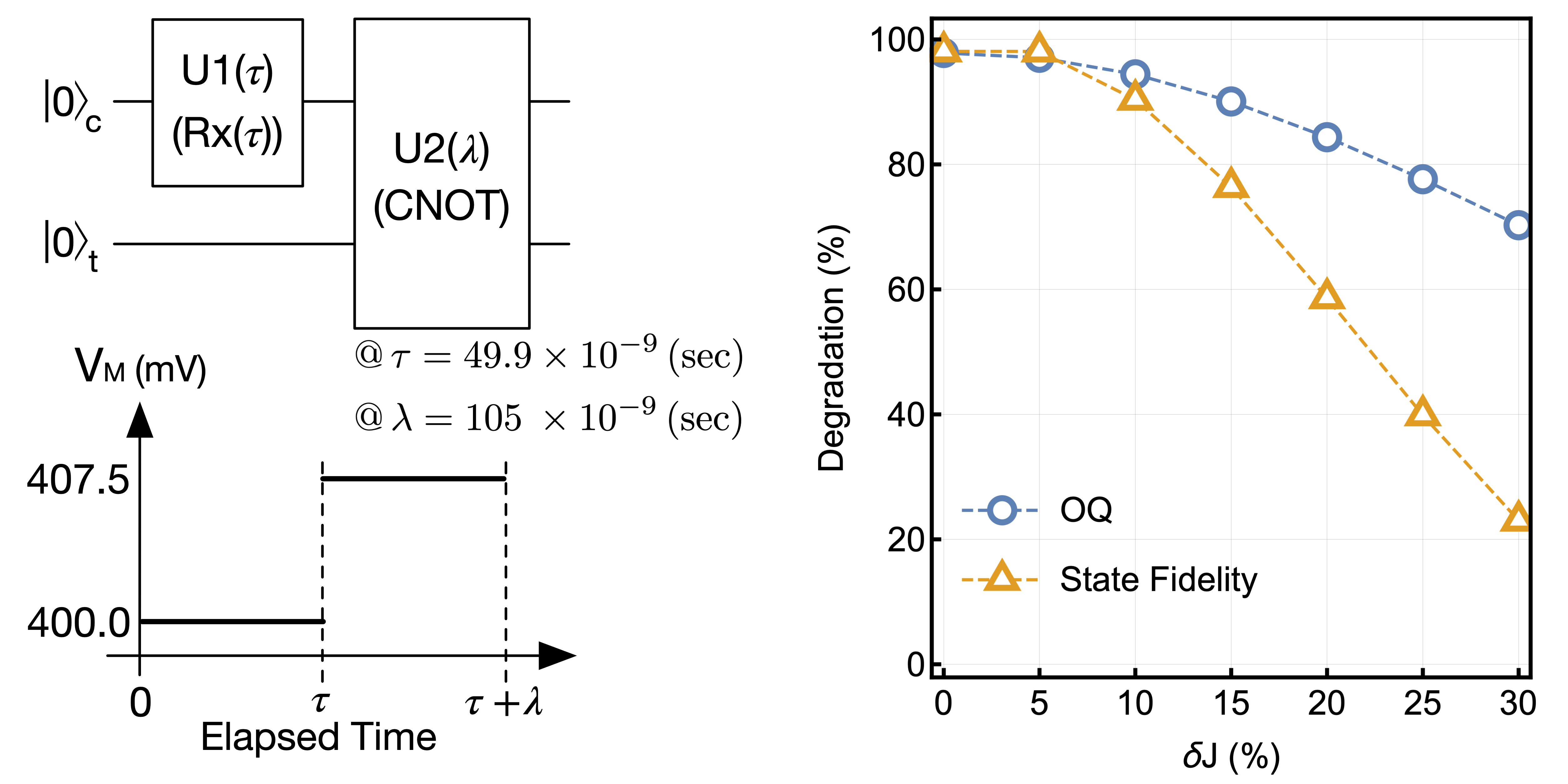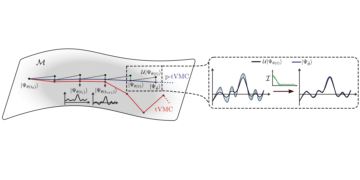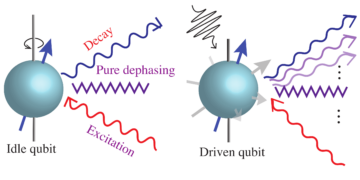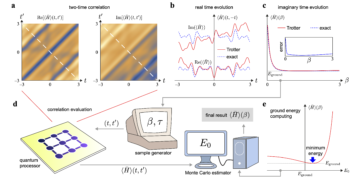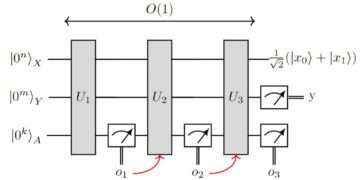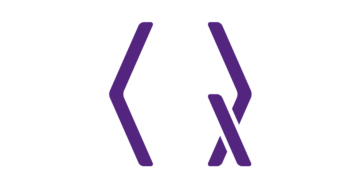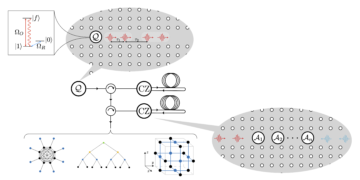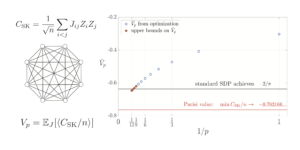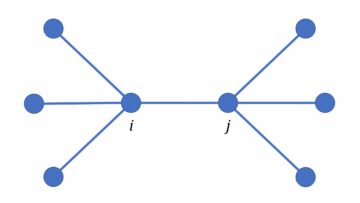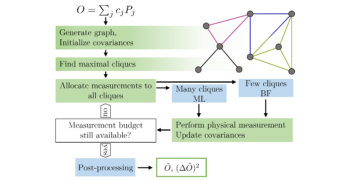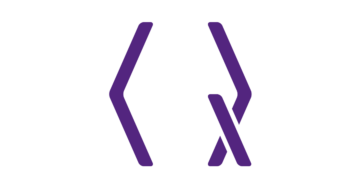Division of National Supercomputing, Korea Institute of Science and Technology Information, Daejeon 34141, Republic of Korea
Find this paper interesting or want to discuss? Scite or leave a comment on SciRate.
Abstract
We characterize the quantum entanglement of the realistic two-qubit signals that are sensitive to charge noises. Our working example is the time response generated from a silicon double quantum dot (DQD) platform, where a single-qubit rotation and a two-qubit controlled-NOT operation are conducted sequentially in time to generate arbitrary entangled states. In order to characterize the entanglement of two-qubit states, we employ the marginal operational quasiprobability (OQ) approach that allows negative values of the probability function if a given state is entangled. While the charge noise, which is omnipresent in semiconductor devices, severely affects logic operations implemented in the DQD platform, causing huge degradation in fidelity of unitary operations as well as resulting two-qubit states, the pattern in the OQ-driven entanglement strength turns out to be quite invariant, indicating that the resource of quantum entanglement is not significantly broken though the physical system is exposed to noise-driven fluctuations in exchange interaction between quantum dots.
Popular summary
► BibTeX data
► References
[1] Ryszard Horodecki, Paweł Horodecki, Michał Horodecki, and Karol Horodecki. “Quantum entanglement”. Rev. Mod. Phys. 81, 865–942 (2009).
https://doi.org/10.1103/RevModPhys.81.865
[2] Nicolas Brunner, Daniel Cavalcanti, Stefano Pironio, Valerio Scarani, and Stephanie Wehner. “Bell nonlocality”. Rev. Mod. Phys. 86, 419–478 (2014).
https://doi.org/10.1103/RevModPhys.86.419
[3] Charles H. Bennett, Gilles Brassard, Claude Crépeau, Richard Jozsa, Asher Peres, and William K. Wootters. “Teleporting an unknown quantum state via dual classical and einstein-podolsky-rosen channels”. Phys. Rev. Lett. 70, 1895–1899 (1993).
https://doi.org/10.1103/PhysRevLett.70.1895
[4] P. W. Shor. “Algorithms for quantum computation: discrete logarithms and factoring”. In Proceedings 35th Annual Symposium on Foundations of Computer Science. Pages 124–134. (1994).
https://doi.org/10.1109/SFCS.1994.365700
[5] Changhyoup Lee, Benjamin Lawrie, Raphael Pooser, Kwang-Geol Lee, Carsten Rockstuhl, and Mark Tame. “Quantum plasmonic sensors”. Chemical Reviews 121, 4743–4804 (2021).
https://doi.org/10.1021/acs.chemrev.0c01028
[6] Frank Arute, Kunal Arya, and Ryan Babbush ${et}$ ${al}$. “Quantum supremacy using a programmable superconducting processor”. Nature 574, 505–510 (2019).
https://doi.org/10.1038/s41586-019-1666-5
[7] Gary J. Mooney, Charles D. Hill, and Lloyd C. L. Hollenberg. “Entanglement in a 20-qubit superconducting quantum computer”. Scientific Reports 9, 13465 (2019).
https://doi.org/10.1038/s41598-019-49805-7
[8] I. Pogorelov, T. Feldker, Ch. D. Marciniak, L. Postler, G. Jacob, O. Krieglsteiner, V. Podlesnic, M. Meth, V. Negnevitsky, M. Stadler, B. Höfer, C. Wächter, K. Lakhmanskiy, R. Blatt, P. Schindler, and T. Monz. “Compact ion-trap quantum computing demonstrator”. PRX Quantum 2, 020343 (2021).
https://doi.org/10.1103/PRXQuantum.2.020343
[9] S. Debnath, N. M. Linke, C. Figgatt, K. A. Landsman, K. Wright, and C. Monroe. “Demonstration of a small programmable quantum computer with atomic qubits”. Nature 536, 63–66 (2016).
https://doi.org/10.1038/nature18648
[10] K. Wright, K. M. Beck, S. Debnath, J. M. Amini, Y. Nam, N. Grzesiak, J. S. Chen, N. C. Pisenti, M. Chmielewski, C. Collins, K. M. Hudek, J. Mizrahi, J. D. Wong-Campos, S. Allen, J. Apisdorf, P. Solomon, M. Williams, A. M. Ducore, A. Blinov, S. M. Kreikemeier, V. Chaplin, M. Keesan, C. Monroe, and J. Kim. “Benchmarking an 11-qubit quantum computer”. Nature Communications 10, 5464 (2019).
https://doi.org/10.1038/s41467-019-13534-2
[11] T. F. Watson, S. G. J. Philips, E. Kawakami, D. R. Ward, P. Scarlino, M. Veldhorst, D. E. Savage, M. G. Lagally, Mark Friesen, S. N. Coppersmith, M. A. Eriksson, and L. M. K. Vandersypen. “A programmable two-qubit quantum processor in silicon”. Nature 555, 633–637 (2018).
https://doi.org/10.1038/nature25766
[12] M. Steger, K. Saeedi, M. L. W. Thewalt, J. J. L. Morton, H. Riemann, N. V. Abrosimov, P. Becker, and H.-J. Pohl. “Quantum information storage for over 180 s using donor spins in a ${}^{28}$SI “semiconductor vacuum””. Science 336, 1280–1283 (2012).
https://doi.org/10.1126/science.1217635
[13] Alexei M. Tyryshkin, Shinichi Tojo, John J. L. Morton, Helge Riemann, Nikolai V. Abrosimov, Peter Becker, Hans-Joachim Pohl, Thomas Schenkel, Michael L. W. Thewalt, Kohei M. Itoh, and S. A. Lyon. “Electron spin coherence exceeding seconds in high-purity silicon”. Nature Materials 11, 143–147 (2012).
https://doi.org/10.1038/nmat3182
[14] M. Veldhorst, J. C. C. Hwang, C. H. Yang, A. W. Leenstra, B. de Ronde, J. P. Dehollain, J. T. Muhonen, F. E. Hudson, K. M. Itoh, A. Morello, and A. S. Dzurak. “An addressable quantum dot qubit with fault-tolerant control-fidelity”. Nature Nanotechnology 9, 981–985 (2014).
https://doi.org/10.1038/nnano.2014.216
[15] M. Veldhorst, C. H. Yang, J. C. C. Hwang, W. Huang, J. P. Dehollain, J. T. Muhonen, S. Simmons, A. Laucht, F. E. Hudson, K. M. Itoh, A. Morello, and A. S. Dzurak. “A two-qubit logic gate in silicon”. Nature 526, 410–414 (2015).
https://doi.org/10.1038/nature15263
[16] D. M. Zajac, A. J. Sigillito, M. Russ, F. Borjans, J. M. Taylor, G. Burkard, and J. R. Petta. “Resonantly driven cnot gate for electron spins”. Science 359, 439–442 (2018).
https://doi.org/10.1126/science.aao5965
[17] Otfried Gühne and Géza Tóth. “Entanglement detection”. Physics Reports 474, 1–75 (2009).
https://doi.org/10.1016/j.physrep.2009.02.004
[18] E. Wigner. “On the quantum correction for thermodynamic equilibrium”. Phys. Rev. 40, 749–759 (1932).
https://doi.org/10.1103/PhysRev.40.749
[19] K. Husimi. “Some formal properties of the density matrix”. Proceedings of the Physico-Mathematical Society of Japan. 3rd Series 22, 264–314 (1940).
https://doi.org/10.11429/ppmsj1919.22.4_264
[20] Roy J. Glauber. “Coherent and incoherent states of the radiation field”. Phys. Rev. 131, 2766–2788 (1963).
https://doi.org/10.1103/PhysRev.131.2766
[21] E. C. G. Sudarshan. “Equivalence of semiclassical and quantum mechanical descriptions of statistical light beams”. Phys. Rev. Lett. 10, 277–279 (1963).
https://doi.org/10.1103/PhysRevLett.10.277
[22] K. E. Cahill and R. J. Glauber. “Density operators and quasiprobability distributions”. Phys. Rev. 177, 1882–1902 (1969).
https://doi.org/10.1103/PhysRev.177.1882
[23] Christopher Ferrie. “Quasi-probability representations of quantum theory with applications to quantum information science”. Reports on Progress in Physics 74, 116001 (2011).
https://doi.org/10.1088/0034-4885/74/11/116001
[24] Jiyong Park, Junhua Zhang, Jaehak Lee, Se-Wan Ji, Mark Um, Dingshun Lv, Kihwan Kim, and Hyunchul Nha. “Testing nonclassicality and non-gaussianity in phase space”. Phys. Rev. Lett. 114, 190402 (2015).
https://doi.org/10.1103/PhysRevLett.114.190402
[25] J. Sperling and I. A. Walmsley. “Quasiprobability representation of quantum coherence”. Phys. Rev. A 97, 062327 (2018).
https://doi.org/10.1103/PhysRevA.97.062327
[26] J Sperling and W Vogel. “Quasiprobability distributions for quantum-optical coherence and beyond”. Physica Scripta 95, 034007 (2020).
https://doi.org/10.1088/1402-4896/ab5501
[27] Martin Bohmann, Elizabeth Agudelo, and Jan Sperling. “Probing nonclassicality with matrices of phase-space distributions”. Quantum 4, 343 (2020).
https://doi.org/10.22331/q-2020-10-15-343
[28] Jiyong Park, Jaehak Lee, Kyunghyun Baek, and Hyunchul Nha. “Quantifying non-gaussianity of a quantum state by the negative entropy of quadrature distributions”. Phys. Rev. A 104, 032415 (2021).
https://doi.org/10.1103/PhysRevA.104.032415
[29] Junghee Ryu, James Lim, Sunghyuk Hong, and Jinhyoung Lee. “Operational quasiprobabilities for qudits”. Phys. Rev. A 88, 052123 (2013).
https://doi.org/10.1103/PhysRevA.88.052123
[30] Jeongwoo Jae, Junghee Ryu, and Jinhyoung Lee. “Operational quasiprobabilities for continuous variables”. Phys. Rev. A 96, 042121 (2017).
https://doi.org/10.1103/PhysRevA.96.042121
[31] Junghee Ryu, Sunghyuk Hong, Joong-Sung Lee, Kang Hee Seol, Jeongwoo Jae, James Lim, Jiwon Lee, Kwang-Geol Lee, and Jinhyoung Lee. “Optical experiment to test negative probability in context of quantum-measurement selection”. Scientific Reports 9, 19021 (2019).
https://doi.org/10.1038/s41598-019-53121-5
[32] Ji-Hoon Kang, Junghee Ryu, and Hoon Ryu. “Exploring the behaviors of electrode-driven si quantum dot systems: from charge control to qubit operations”. Nanoscale 13, 332–339 (2021).
https://doi.org/10.1039/D0NR05070A
[33] Hoon Ryu and Ji-Hoon Kang. “Devitalizing noise-driven instability of entangling logic in silicon devices with bias controls”. Scientific Reports 12, 15200 (2022).
https://doi.org/10.1038/s41598-022-19404-0
[34] Jing Wang, A. Rahman, A. Ghosh, G. Klimeck, and M. Lundstrom. “On the validity of the parabolic effective-mass approximation for the ${I}$-${V}$ calculation of silicon nanowire transistors”. IEEE Transactions on Electron Devices 52, 1589–1595 (2005).
https://doi.org/10.1109/TED.2005.850945
[35] R. Neumann and L. R. Schreiber. “Simulation of micro-magnet stray-field dynamics for spin qubit manipulation”. Journal of Applied Physics 117, 193903 (2015).
https://doi.org/10.1063/1.4921291
[36] Maximilian Russ, D. M. Zajac, A. J. Sigillito, F. Borjans, J. M. Taylor, J. R. Petta, and Guido Burkard. “High-fidelity quantum gates in si/sige double quantum dots”. Phys. Rev. B 97, 085421 (2018).
https://doi.org/10.1103/PhysRevB.97.085421
[37] E. Paladino, Y. M. Galperin, G. Falci, and B. L. Altshuler. “${1}/{f}$ noise: Implications for solid-state quantum information”. Rev. Mod. Phys. 86, 361–418 (2014).
https://doi.org/10.1103/RevModPhys.86.361
Cited by
This Paper is published in Quantum under the Creative Commons Attribution 4.0 International (CC BY 4.0) license. Copyright remains with the original copyright holders such as the authors or their institutions.

